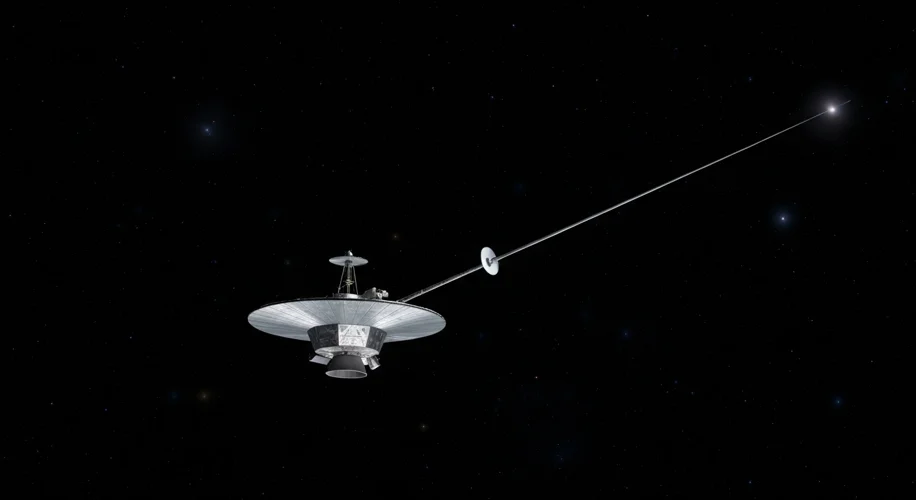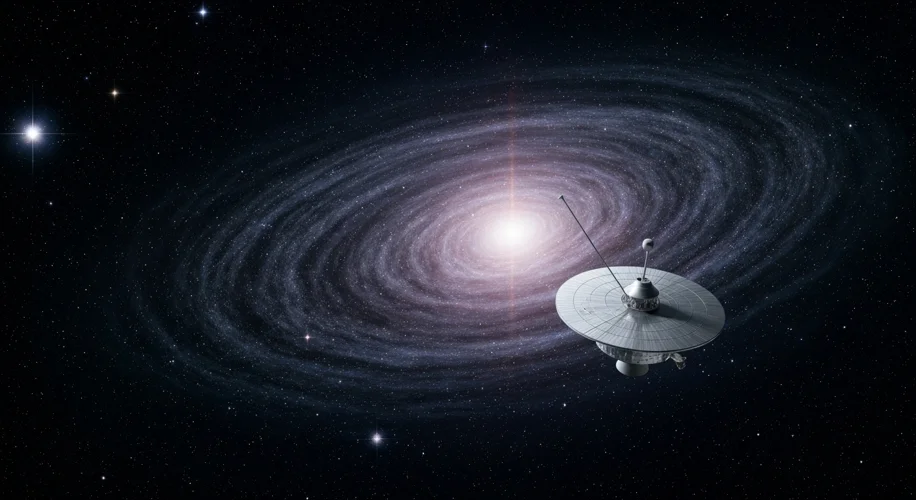In the vast, silent expanse of the cosmos, humanity’s curiosity has ventured further than ever before. Our ambassador to the stars, Voyager 2, launched on August 20, 1977, has been a silent witness to wonders beyond imagination. This remarkable spacecraft, the only one to have visited all four gas giants – Jupiter, Saturn, Uranus, and Neptune – embarked on a mission that would redefine our understanding of the solar system and, indeed, our place within the universe.
For decades, Voyager 2 navigated the swirling storms of Jupiter, marveled at Saturn’s majestic rings, unveiled the blue-green hues of Uranus, and danced with the icy winds of Neptune. Each flyby was a triumph of engineering and scientific endeavor, sending back images and data that painted a vibrant, dynamic picture of our outer solar system. Its journey through the planets was a prelude to an even grander adventure.

The true odyssey began in November 2018 when Voyager 2 crossed the heliopause, the invisible boundary where the Sun’s influence wanes, and the vast, unexplored territory of interstellar space begins. This was a monumental achievement, marking humanity’s first tentative step into the realm between the stars. Suddenly, the familiar solar wind and magnetic field, which had shielded and guided the spacecraft, gave way to an entirely different environment – a plasma of unknown density and composition.
What has Voyager 2 encountered in this alien territory? The data it sends back is a tantalizing glimpse into a region previously only theorized. We learn about the interstellar magnetic field, its strength, and orientation, and the density of charged particles, which is higher than anticipated. The heliosphere, our Sun’s protective bubble, is being compressed by the interstellar medium, revealing the dynamic interplay between our star and its galactic neighborhood.
However, this journey into the unknown is not without its challenges. In 2023, NASA momentarily lost contact with Voyager 2 due to a command error that inadvertently tilted its antenna away from Earth. For days, the spacecraft, hurtling through the void at over 34,000 miles per hour, was effectively deaf and blind. Thankfully, a swift and ingenious solution involving a deep space network antenna and a carefully orchestrated sequence of commands re-established communication, demonstrating humanity’s persistent dedication to this groundbreaking mission.
Today, September 2, 2025, Voyager 2 continues its silent vigil, billions of miles from home. Its mission is far from over, but its discoveries have already reshaped our cosmic perspective. It has shown us that the heliosphere is not a perfectly spherical shell but is likely distorted and shaped by the interstellar environment. It has provided direct measurements of interstellar plasma, magnetic fields, and cosmic rays, data that will fuel scientific inquiry for generations.
Yet, as we celebrate these incredible achievements, Voyager 2’s ongoing journey raises as many questions as it answers. What lies beyond the immediate interstellar neighborhood? What other celestial bodies or phenomena might it encounter? How does our solar system truly interact with the wider galaxy?
The continued transmission of data from Voyager 2 is a testament to human ingenuity and our insatiable desire to explore. It’s a stark reminder that even in the seemingly empty void, there are wonders waiting to be discovered, pushing the boundaries of our knowledge and inspiring us to look ever outward, towards the infinite expanse of the universe.

